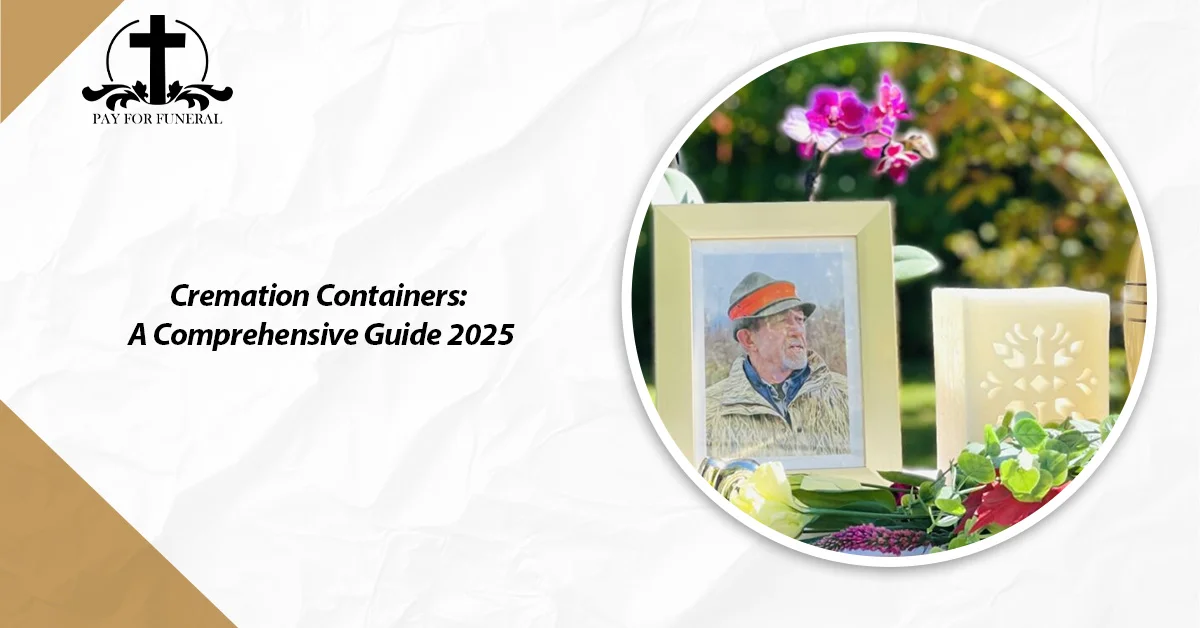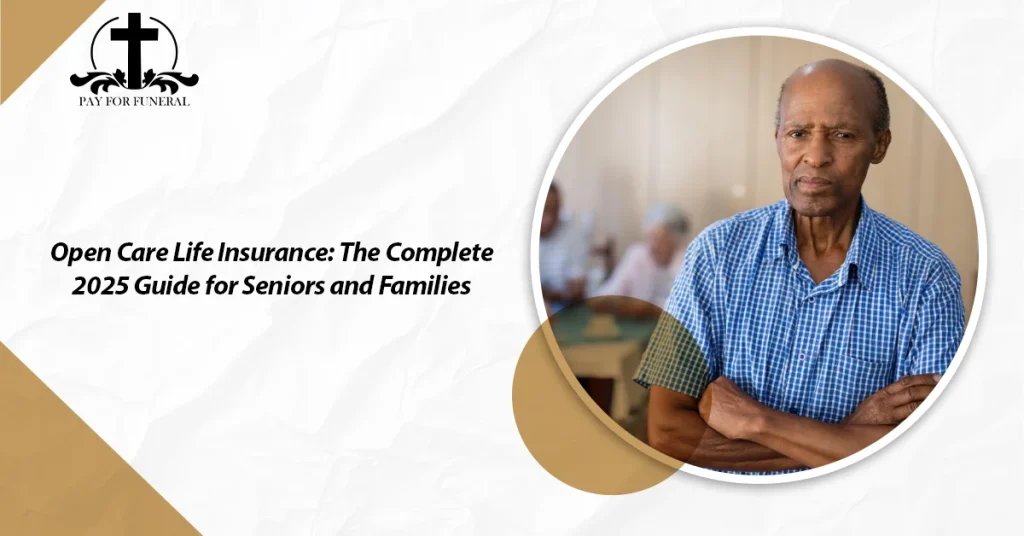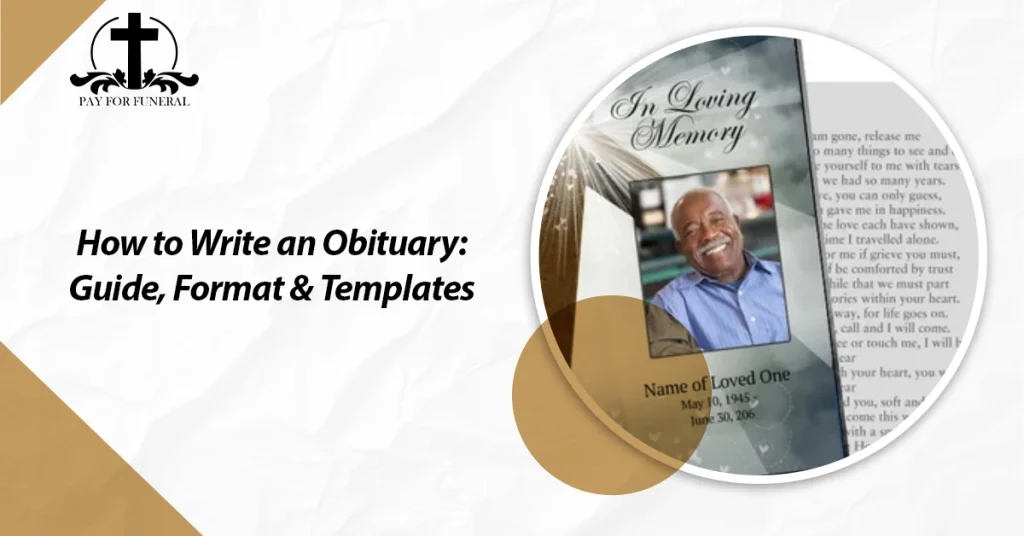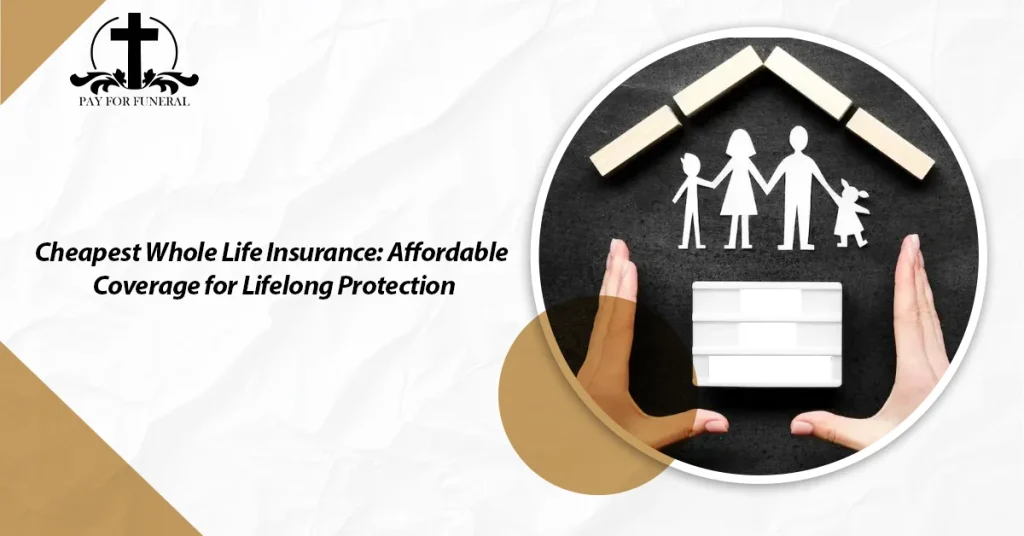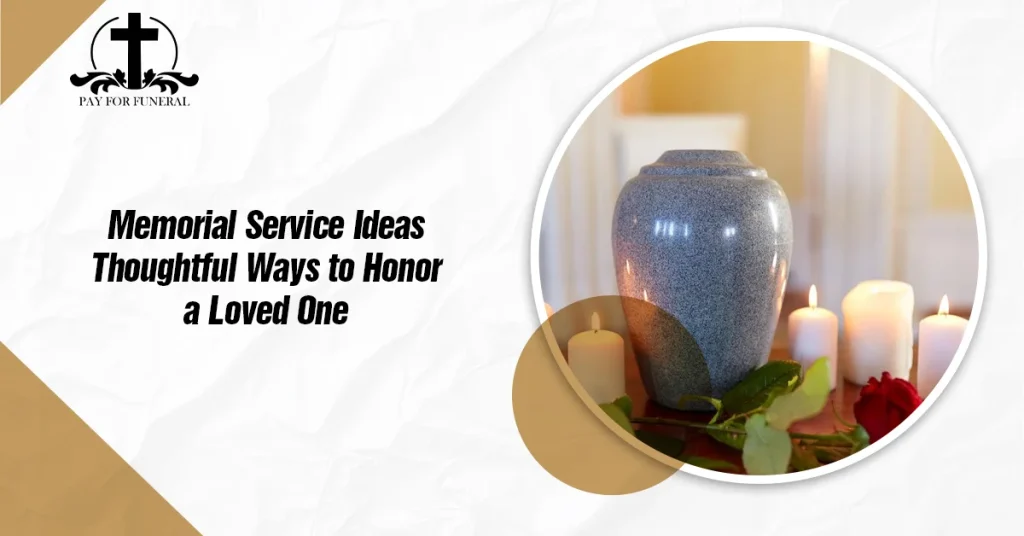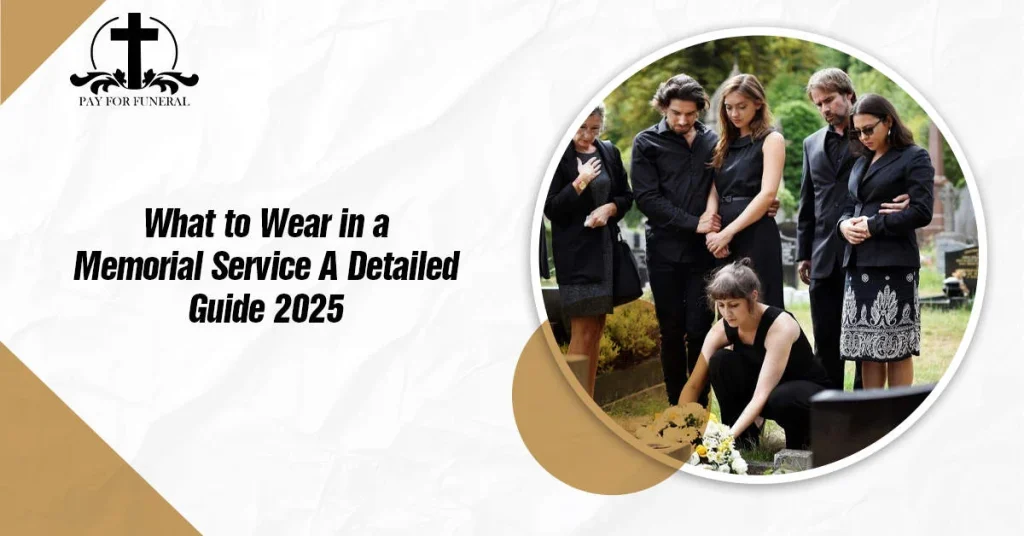Introduction
Planning a cremation can feel confusing and emotional. With so many decisions to make during a difficult time, choosing the right cremation container is one of them, and it’s often not something people think about until they have to.
Cremation containers are the boxes or holders used during the cremation process. They can also include urns used to hold ashes afterward. These containers matter because they’re part of honoring your loved one with respect and care, while also following laws and crematorium requirements.
This simple guide will help you understand all the different types of cremation containers, their uses, and answer common questions, so you can make the right choice with confidence and peace of mind.
Understanding Cremation Containers for Ashes:
Cremation containers are specially designed boxes or enclosures used to hold a body before and during the cremation process. Their main purpose is to provide a safe, respectful, and clean way to transport and handle the body at the crematory.
Get Free Quotes
Customized Options Await
How They Differ from Urns and Caskets
Cremation containers are not the same as urns or traditional caskets. Here’s the difference:
- Cremation containers are used before or during cremation.
- Urns are used after cremation to hold the ashes.
- Caskets are typically used for burial or viewing at a funeral service and are usually more expensive.
Unlike caskets, cremation containers are much simpler in design and are made to be cremated with the body.
When and Where They Are Used
Cremation containers are used in a few key moments:
- Transportation of the body to the crematory
- Before or during cremation, as the container goes into the cremation chamber
- In memorial services, if a viewing or farewell ceremony is held
- For burial, especially if choosing a biodegradable or eco-friendly option
Some families choose containers that can be used for both a service and the cremation itself.
Common Materials Used
Cremation containers come in different materials, depending on the family’s needs and preferences. Common types include:
- Cardboard: affordable and eco-friendly
- Plywood or particleboard: simple, sturdy options
- Solid wood: more traditional and can be used for a viewing
- Biodegradable materials: for green burials or environmentally conscious choices
Each crematory may have rules about what types of containers they accept, especially related to materials that are safe to burn.
Funeral Industry Guidelines
According to the Federal Trade Commission’s Funeral Rule, crematories must inform families if a cremation container is required and what options are available. Most crematories require a rigid, leak-resistant, and fully combustible container. The Cremation Association of North America (CANA) also provides best practices for container use, ensuring safety, dignity, and compliance with local laws.
Choosing the right cremation container matters because it reflects both care for your loved one and respect for the cremation process.
Cremation Containers for Humans: Your Main Options Explained
When choosing a cremation container for a loved one, it helps to understand the different types available and what they’re used for. From simple temporary options to permanent, more decorative ones, cremation containers come in a range of sizes, styles, and materials to meet various needs and budgets.
Standard Sizes and Styles
Cremation containers for humans are designed to fit adult remains. Most containers follow standard dimensions required by crematories, typically around 22–24 inches wide, 12–14 inches high, and 70–80 inches long, though this can vary slightly. Styles range from basic rectangular boxes to more crafted options made of wood or other natural materials.
Temporary vs. Permanent Options
There are two main types of cremation containers:
- Temporary containers
These are often simple boxes (usually cardboard or fiberboard) provided by the crematory to hold remains during the cremation process. They’re usually not meant for display or long-term storage. - Permanent containers
These include more durable options that can also serve as an urn or be used in a service. Some families choose wood or biodegradable containers that can go directly from a memorial into the cremation chamber, combining form and function.
Cost Considerations
Cremation containers can vary widely in price depending on materials and design:
- Cardboard or fiberboard: $50–$150
- Plywood or particleboard: $150–$300
- Solid wood or custom styles: $300–$1,000+
According to the National Funeral Directors Association (NFDA), the average cost for a cremation casket (a more finished option) is around $1,200, but many families opt for more affordable alternatives.
Regulations and Requirements
Most crematories require a rigid, combustible, and leak-resistant container for safety and handling purposes. Some funeral homes may offer rental caskets for viewing, with the body later transferred to a cremation container. Always check with your chosen provider, as local and state laws may also apply.
Appearance and Personalization Options
While basic containers are plain, some permanent options offer personalization, such as:
- Engraving names, dates, or messages
- Choosing wood types or eco-friendly materials
- Adding handles, fabric lining, or decorative finishes
These touches can make the container feel more meaningful, especially if it’s used during a memorial or service.
In the end, your choice depends on your budget, beliefs, and how you wish to honor your loved one. Whether temporary or permanent, simple or decorative, cremation containers serve an important role in the process of remembrance and closure.
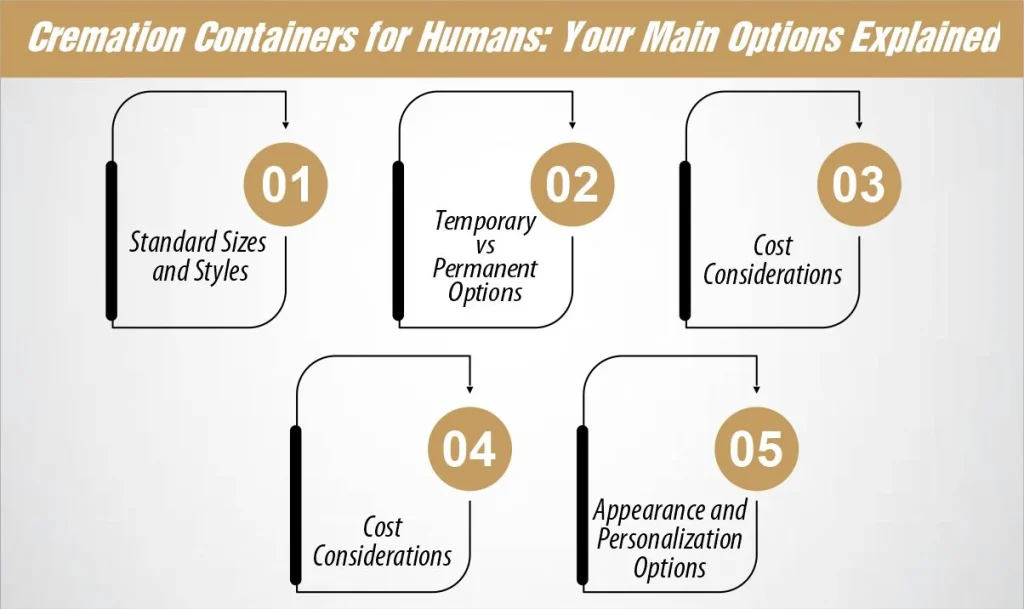
Alternative Container for Cremation: Affordable & Eco-Friendly Choices
When planning a cremation, many families look for simple, affordable, and earth-friendly options. That’s where alternative containers come in. These are basic, no-frills containers used in place of traditional caskets, and they’re widely accepted in most crematories.
What Is an “Alternative Container”?
An alternative container is a non-metal, fully combustible box that holds the body during cremation. It meets the basic requirements of being rigid, leak-resistant, and safe to cremate, without the extra cost or decoration of a casket.
Common Types of Alternative Containers
These containers are made from simple, affordable materials such as:
- Cardboard: lightweight, biodegradable, and the most affordable
- Fiberboard or pressed wood: more durable than cardboard, still cost-effective
- Unfinished or simple wooden boxes: minimal design, sometimes used for eco-friendly burials
Some may also be made from biodegradable materials, ideal for green cremations or natural burials.
Why Families Choose Alternative Containers
Alternative containers are a popular choice for several reasons:
- Lower cost: Often starting under $100, they’re much cheaper than traditional caskets
- Simplicity: Many families prefer a plain, respectful approach
- Environmental benefits: Most are made from natural or recycled materials and produce fewer emissions during cremation
Are They Accepted Everywhere?
Most crematories do accept alternative containers, but not all types may meet local guidelines. For example, some facilities may have restrictions on certain biodegradable or homemade containers, especially if they aren’t rigid or leak-proof.
Before purchasing or choosing an alternative container, it’s important to check with the funeral home or crematory for specific requirements.
You can also find state-specific cremation laws and container regulations by visiting your state’s health or consumer protection website, or by checking with the Funeral Consumers Alliance or National Funeral Directors Association (NFDA).
If you’d like, I can help you look up container rules in your specific state. Just let me know where you are.
Cardboard Cremation Containers: Simple, Cost-Effective, and Widely Accepted
Cardboard cremation containers are one of the most common alternative container options. Designed to meet crematory requirements while remaining affordable and eco-friendly, they’re often chosen by families looking for a simple, respectful solution.
Pros and Cons of Cardboard Containers
Pros:
- Very affordable – Prices often start around $50–$150
- Eco-friendly – Made from recycled, biodegradable materials
- Lightweight and easy to handle
- Accepted by most crematories
- Can be customized with names, labels, or decorations
Cons:
- Not suitable for public viewings (unless reinforced or covered)
- Less durable than wood or other materials for transport over long distances
- Minimal appearance – may not appeal to families seeking a more traditional or elegant look
Durability and Safety
While they may seem fragile, cardboard cremation containers are designed to meet crematory safety standards. They are sturdy enough to hold adult human remains and are built to be rigid, leak-resistant, and fully combustible. Some versions include reinforced bottoms or liners for added security.
Customization and Labeling Options
Cardboard containers can often be personalized in simple ways:
- Names or identification tags
- Handwritten messages or artwork from loved ones
- Printed logos or spiritual symbols
Some funeral homes may allow families to decorate the container before cremation, offering a meaningful way to say goodbye.
Environmental Benefits
One of the biggest advantages of cardboard containers is their low environmental impact. They are:
- 100% biodegradable
- Often made from recycled paper products
- Lower in emissions when burned, compared to traditional caskets
These qualities make them a top choice for green cremation or eco-conscious families.
Typical Pricing
Cardboard cremation containers are among the most budget-friendly options available:
- Basic cardboard containers: $50–$100
- Reinforced or lined versions: $100–$200
- Custom printed or upgraded styles: Up to $300
If you’re seeking a simple, respectful, and environmentally responsible option, cardboard cremation containers offer a thoughtful solution that’s widely accepted and easy to arrange.
Small Cremation Ash Containers: Keepsakes, Mini-Urns & Sharing Ashes
Small cremation ash containers are a thoughtful and personal way to keep a loved one close, especially when families choose to share ashes or keep a small portion as a keepsake. These containers are designed to hold a small amount of cremated remains and come in a wide range of styles and materials to suit different preferences.
When and Why They’re Used
Many families choose small containers when they want to divide ashes among relatives, keep a memorial at home or on a shelf, or carry ashes in a meaningful piece of jewelry. They’re especially popular in situations where a larger urn is stored in a cemetery or memorial garden, but loved ones still wish to have a personal keepsake.
Materials and Styles
Small cremation containers are available in various materials, including:
- Metal: durable and often engraved (e.g., stainless steel, brass)
- Glass: hand-blown or colored for a more artistic look
- Ceramic: elegant and often used for display at home
- Wood: carved or natural finishes, ideal for a warm, traditional feel
Personalization and Symbolism
Most small containers can be personalized with names, dates, or a short message. Some come with religious symbols, hearts, doves, or other designs that hold special meaning. Personalizing a keepsake helps honor the memory of your loved one in a way that feels deeply individual.
Airline Travel and TSA Rules
If you plan to travel with cremated remains, be sure to use a container that complies with TSA guidelines. This means it should be made from a material that can be scanned (such as wood or plastic) rather than metal, which may block the X-ray. Always carry a copy of the death certificate and cremation paperwork, and check with your airline for specific policies before flying.
Types of Small Cremation Ash Containers
Here are the most common types:
- Mini urns
Small decorative urns are designed to hold a portion of ashes. Often displayed at home or placed in memorial niches. - Vials or pendants
Small wearable containers, often shaped like hearts, crosses, or cylinders, are used as memorial jewelry. - Memory boxes
Small wooden or fabric-covered boxes that may contain ashes along with photos, notes, or other keepsakes.
These small containers provide a comforting and respectful way to remember a loved one and offer flexibility for sharing their memory in personal and lasting ways.
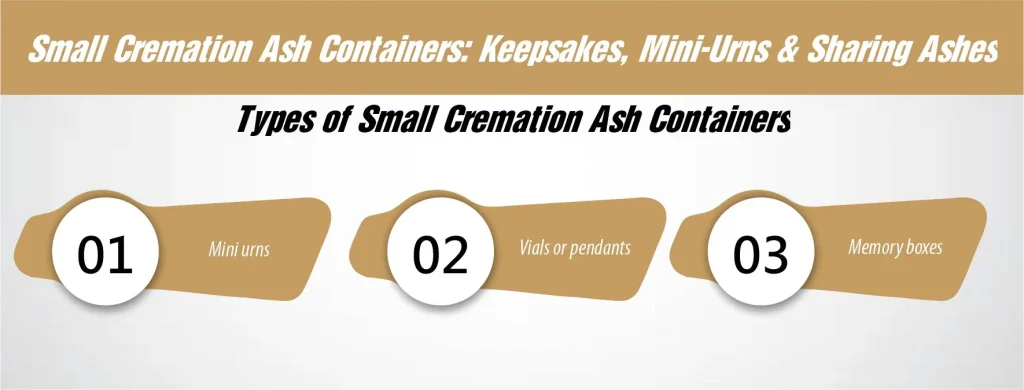
Conclusion
Understanding your cremation container options is an important step in planning a respectful and meaningful farewell. The right choice can support your family’s needs, values, and budget, whether you prefer a simple, eco-friendly container or a more personalized, lasting keepsake. Knowing the difference between temporary and permanent options, and what’s accepted by your crematory, helps you make informed and confident decisions during a difficult time.
If you have questions, don’t hesitate to ask your funeral provider or crematory. They can explain what’s required and guide you toward choices that match your wishes and local regulations.
Frequently Asked Questions
A cremation container is a basic, combustible box used to hold the body during the cremation process.
The body is placed inside the container, which goes directly into the cremation chamber.
Yes, ashes are often transferred from the original container to a temporary or permanent urn after cremation.
They’re typically rectangular and made from cardboard, wood, or biodegradable materials, with minimal decoration.
No caskets are for viewing or burial and are often ornate, while cremation containers are simple, functional, and designed to be cremated.
Rachel Smith, Funeral Insurance Specialist
Rachel Smith is a dedicated funeral insurance expert at Pay For Funeral, with over 10 years of experience helping families find peace of mind during life’s most sensitive moments. Known for her warm, compassionate approach, Rachel empowers individuals to plan with clarity, dignity, and confidence. She specializes in simplifying funeral insurance, making it approachable, affordable, and tailored to each person’s unique needs. Through every article she writes, Rachel strives to educate, comfort, and guide readers in making thoughtful, informed choices for the future.

